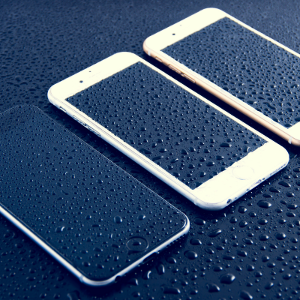You are viewing our site as an Agent, Switch Your View:
Agent | Broker Reset Filters to Default Back to ListWhat to Do When Your Smartphone Falls into the Water
September 18 2017
Kerplunk! That may be the most dreaded sound a smartphone user can ever hear. If your cell phone has ever dropped in the water, you know exactly what I mean. Here are some things you can do when your smartphone decides unexpectedly to take a bath.
 Step 1. Get it out of the water – and fast! The faster you remove your smartphone from the water, the better—because the longer it's in contact with water, the more likely it is to never recover. Just be sure to stay safe while you do it; be mindful of where it fell and whether it is connected to an electric power supply.
Step 1. Get it out of the water – and fast! The faster you remove your smartphone from the water, the better—because the longer it's in contact with water, the more likely it is to never recover. Just be sure to stay safe while you do it; be mindful of where it fell and whether it is connected to an electric power supply.
Step 2. Turn it off. Power down your smartphone completely as quickly as you can. If you have an iPhone, hold down both the Lock Button and the Home Button for five seconds, and that will create a "Hard Shut Down." The fastest solution for Android phone users is to simply remove the battery as quickly as possible. Keep it powered off and do not turn it back on.
Step 3. Pat it dry, but don't shake or blow on it. Take off any case, remove any headphones, remove the SIM card if one is installed, and for Android phones, remove the back and battery. What you want to prevent is further any corrosion, short circuit, or additional damage from taking place. Gently pat dry the components with an absorbing cloth, tap it gently against your hand with the Lightning connector facing down to drain the fluid, but don't blow on it, as that could push water further inside, and don't insert anything into the openings either. Clean off all water outside and gently drain any excess water inside your phone through any openings.
Something to keep in mind: if water got inside, your warranty is probably already voided. Here are a couple of sites that can aid you in checking the Liquid Damage Indicator of your phone:
Check the policy that your phone provider has on damaged phones, as it may guide your next steps. You can also visit an Apple Store or Authorized Service Center.
Step 4. Did it fall in dirty or salty water? Rinse it out. [Optional] If your phone was immersed in salt or dirty water, you'll need to rinse it out to remove chemicals and impurities. Rinsing it with high concentration isopropyl alcohol will help remove the impurities while helping to dry it out. You can also try distilled water to clean out possible contaminants. Don't use tap water, as it has minerals which can create further damage. And remember to keep the battery, SIM card and any other removable parts off if you do this.
Step 5. Dry it out – and wait! If you have an iPhone, opening it up and putting it back together is well beyond the skill level of most folks. Patience is really a key factor in drying out your phone.
Expert testing says that open air-drying your smartphone is the safest method. Leaving your phone in open air where there is an open space with good circulation, such as a counter top, will dry your phone out faster. Adding a small fan could help accelerate things, and some folks have found success leaving their phones on an air conditioner vent (but don't leave it on a heater vent, as too much heat could damage your phone).
Step 6. Fully charge it and then power it on. Once you have dried it out for 48 hours, it's time to fully charge your smartphone and then try to power it on. If it works, congratulations, but keep an eye on it, as you may find that it may not perform 100 percent like it used to. One common malady of a water accident with a smartphone: the battery is destroyed. So, if your phone does not work after you have dried it out for two days, you can take a gamble after and try to replace the battery and see if that fixes the problem.
What not to do
A few things to keep in mind that you don't want to do if your smartphone falls into water:
- Don't try to turn it on right away.
- Don't try pressing buttons or keys unless you are trying to power it off.
- Don't try to blow dry it and never put it in a microwave or oven.
- Don't shake, tap or bang your phone.
What to do
The key is to react fast and get it out of the water source, then wipe it off gently to get the water out, not push it in, and have patience to let it dry fully. Contact your cell carrier quickly to have your calls forwarded so you won't miss a beat!
To view the original article, visit the Tech Helpline blog.









